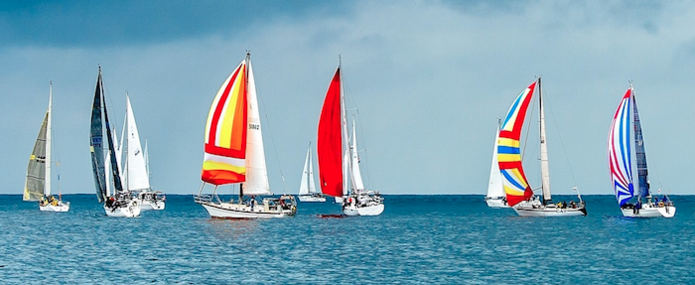After over a decade of scientific debates, legal controversies and political wrangling, negotiations for a new treaty for the conservation and sustainable use of high-seas biodiversity begin this week in New York.
Good tidings came on Christmas eve last year, when the United Nations General Assembly passed a resolution convening an intergovernmental conference to draw up an international legally binding instrument on the conservation and sustainable use of biodiversity in marine areas beyond national jurisdiction (ABNJ) – commonly referred to as the “high seas”.[1] The resources of the high seas have long been sheltered by their inaccessibility and our relative indifference – we used to regard these waters as a desolate and lifeless area. But technological advances have allowed us to traverse its vast distances and dive its depths, while scientific discoveries have revealed previously unknown ecosystems teeming with life.
This has heralded a new era for the high seas, characterised by a growing appetite for its resources. No longer ignored and unremarkable, the high seas now play host to a range of human activities, from fishing and navigation to prospecting for seabed minerals and novel genes. Ensuring the health of marine biodiversity amidst this goldrush is the objective of the upcoming negotiations, where the collective ambition to of effectively managing a global public good will come face to face with political posturing and national interests.
Indeed, the long and winding road to formal negotiations began with a clash of divergent viewpoints. When preliminary discussions commenced in 2006, under the auspices of a United Nations working group, it was broadly understood within the international community that there were certain gaps in the framework for the management of marine areas beyond national jurisdiction. Nevertheless, some States – such as the United States, Russia, Japan, Canada and Iceland – were of the view that the solution lay in a better application of existing instruments, while others – with the European Union at the helm – pointed to inadequacies in existing legislation and advocated for the negotiation of a new treaty.
A second division quickly emerged over the status of marine genetic resources, whose potential for commercialisation by the pharmaceutical industry and others has led to a proliferation of patents associated with novel genes from marine species. In this respect, countries of the G77 & China group have appealed for these resources to be considered part of the “common heritage of mankind”, meaning that the profits from such exploitation would be shared by all, while many other States counter that these areas should be governed by the traditional principle of freedom of the high seas instead – i.e. the “first come, first served” approach that has been at the heart of marine governance since the 17th Century.
The central pillars of the forthcoming negotiations are themselves the result of these divisions and a subsequent compromise reached between the two sides. The European Union was an early advocate for the establishment of an international mechanism that would enable the creation of marine protected areas (MPAs) to protect high seas ecosystems. However, it soon became clear that widespread support for an agreement could not be obtained without addressing concerns related to marine genetic resources and capacity-building for developing countries, issues of great importance to the G77 & China.
Alongside environmental impact assessments (EIA), these issues – marine protected areas, marine genetic resources, capacity-building and the transfer of marine technology – form the “Package Deal” to be negotiated. Reform of fisheries governance is not explicitly part of the package and some fishing States have firmly opposed proposals to strengthen fisheries management through a new agreement, arguing that this would undermine existing bodies.
The consensus adoption of the resolution opening negotiations sets a positive tone, which many hope will continue to prevail as the negotiations unfold. Despite broad agreement on the need to better protect the high seas and its resources, States are still yet to converge on a shared understanding regarding many fundamental questions.
Some topics are particularly contentious and could challenge even seasoned diplomats and negotiators. Commercialisation of marine genetic resources is progressing rapidly, yet the bulk of this activity is conducted by just a handful of companies and remains unregulated. Complex negotiations lie ahead to find common ground between the developed countries able to exploit theses resources and the G77 & China and others who advocate for the sharing of benefits associated with the use of these resources via the “common heritage of mankind” principle.
Meanwhile, the question of high seas fishing will likely be one of the elephants in the room. While fisheries are not specifically included on the list of topics up for discussion, their impacts on biodiversity and gaps in the current framework make it inevitable that they will nonetheless be part of the discussions concerning marine protected areas and impact assessment.
Three years after COP 15 and the Paris Agreement, the international community is now embarking on another cooperative effort to ensure the management of a public good under threat. Following the adoption of the United Nations Convention on the Law of the Sea in 1982 after nine years of international negotiations, the president of the diplomatic conference, Tommy B. Koh of Singapore, remarked that the convention represented a monumental achievement for the international community, even though the final text did not fully satisfy the interests and objectives of any State. It is with this spirit of cooperation and compromise, as well as a profound sense of responsibility, that States must approach this important meeting if they are to develop an effective framework for the conservation and sustainable use of marine resources and safeguard the future of the global Ocean.
[1] Legally speaking, marine areas beyond national jurisdiction comprise two distinct areas: the “high seas”, i.e. the water column beyond the 200 nautical mile “Exclusive Economic Zone” (EEZ), and “the Area”, i.e. the seabed and subsoil thereof beyond national continental shelves.


